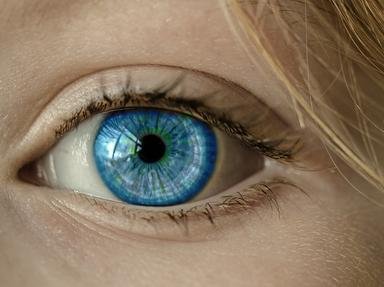Quiz Answer Key and Fun Facts
1. Vision is the main sensory system used by humans to understand the surrounding world. But do we actually perceive what is outside? Which of the following statements is NOT true?
2. The same region in the brain is responsible for visualizing both external stimuli (e.g. apples in the outer world) and internal stimuli (e.g. apples from our memories).
3. Many organisms are capable of discriminating ultraviolet (UV) light, but humans are not one of them. Which of the following is INCORRECT?
4. Our eyes function both at night and at daylight conditions. Measuring light intensity in the smallest of units, how much light is just enough to stimulate the retinal cells?
5. Colour vision is a human capability that turns everyday experience to a joyful one, but it's not to be taken for granted. Which of the following statements is NOT true?
6. The moon and the sun appear larger near the horizon than they do while higher up in the sky. Other artifacts, like airplanes and clouds, are not subject to this illusion.
This illusion is a result of a magnification effect of the Earth's atmosphere (just like a spoon looks bigger when dipped in a glass of water).
7. "Critical Period" is the period of time in which a deprivation of stimuli to an organism results in the inability to develop specific sensorial function in the future. The parents of one child were doubtful about the validity of this theory and raised him from birth up to 7 years in an environment in which he was exposed only to horizontal lines. What will be his expected reaction when visiting a forest for the first time (assume trees are purely vertical)?
8. "Split Brain" is the result of severing the corpus callosum, a neural structure connecting the two hemispheres of the brain. It is usually induced in a surgical operation.
When shown an object only to the left hemisphere of a split brain patient (by placing it in the right visual field), the person will know what the object is, but will be unable to name it.
9. Human face recognition is a visual task of major importance in everyday life. Which of the following statements does NOT describe a valid characteristic of face recognition?
10. The perception of a moving object is a result of a combination of at least two brain functions: shape perception and movement perception. There are people whose movement "module" is malfunctioning (movement agnosia). What people with this deficiency at its advanced stages are experiencing?
Source: Author
gentlegiant17
This quiz was reviewed by FunTrivia editor
crisw before going online.
Any errors found in FunTrivia content are routinely corrected through our feedback system.

